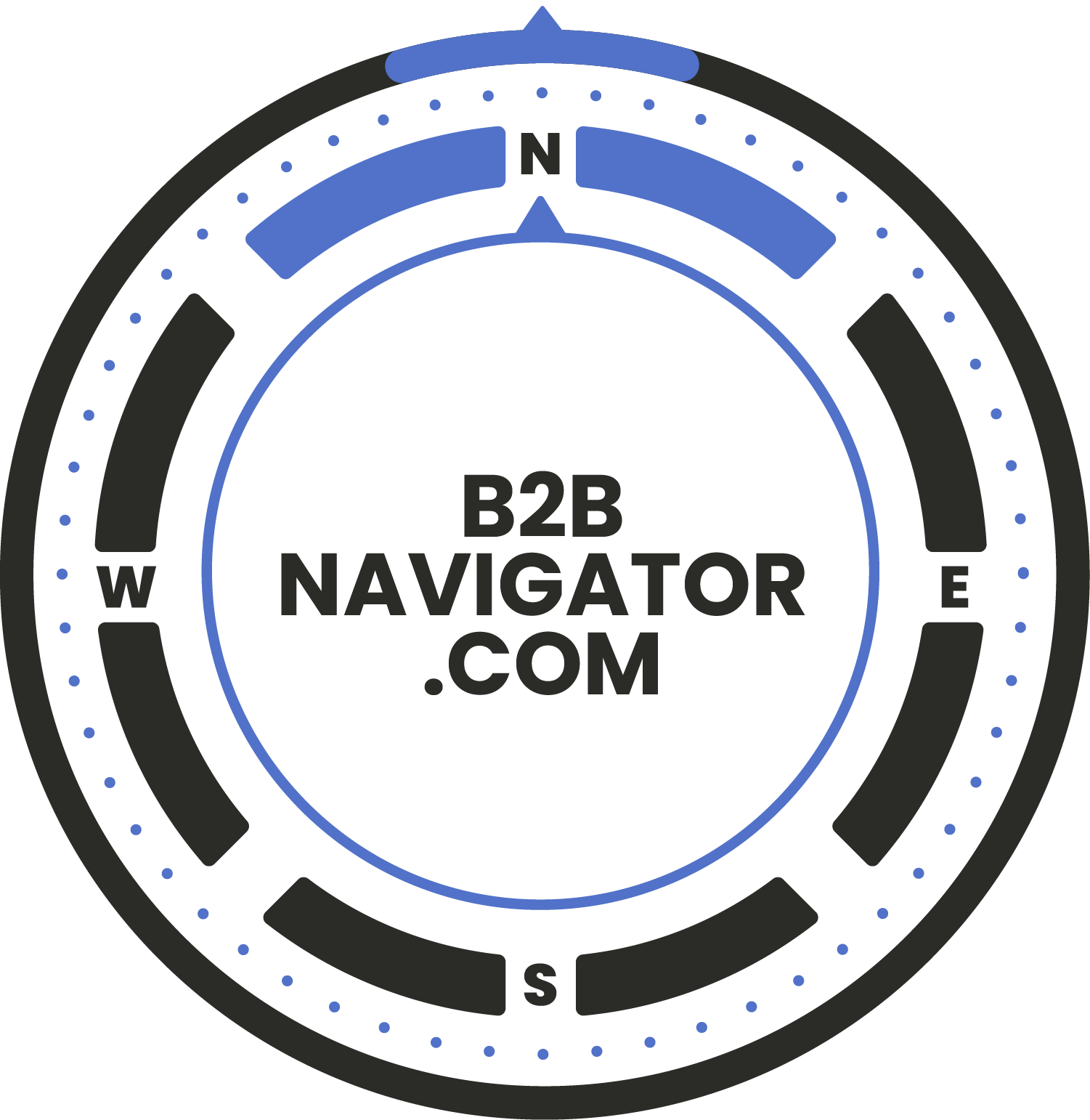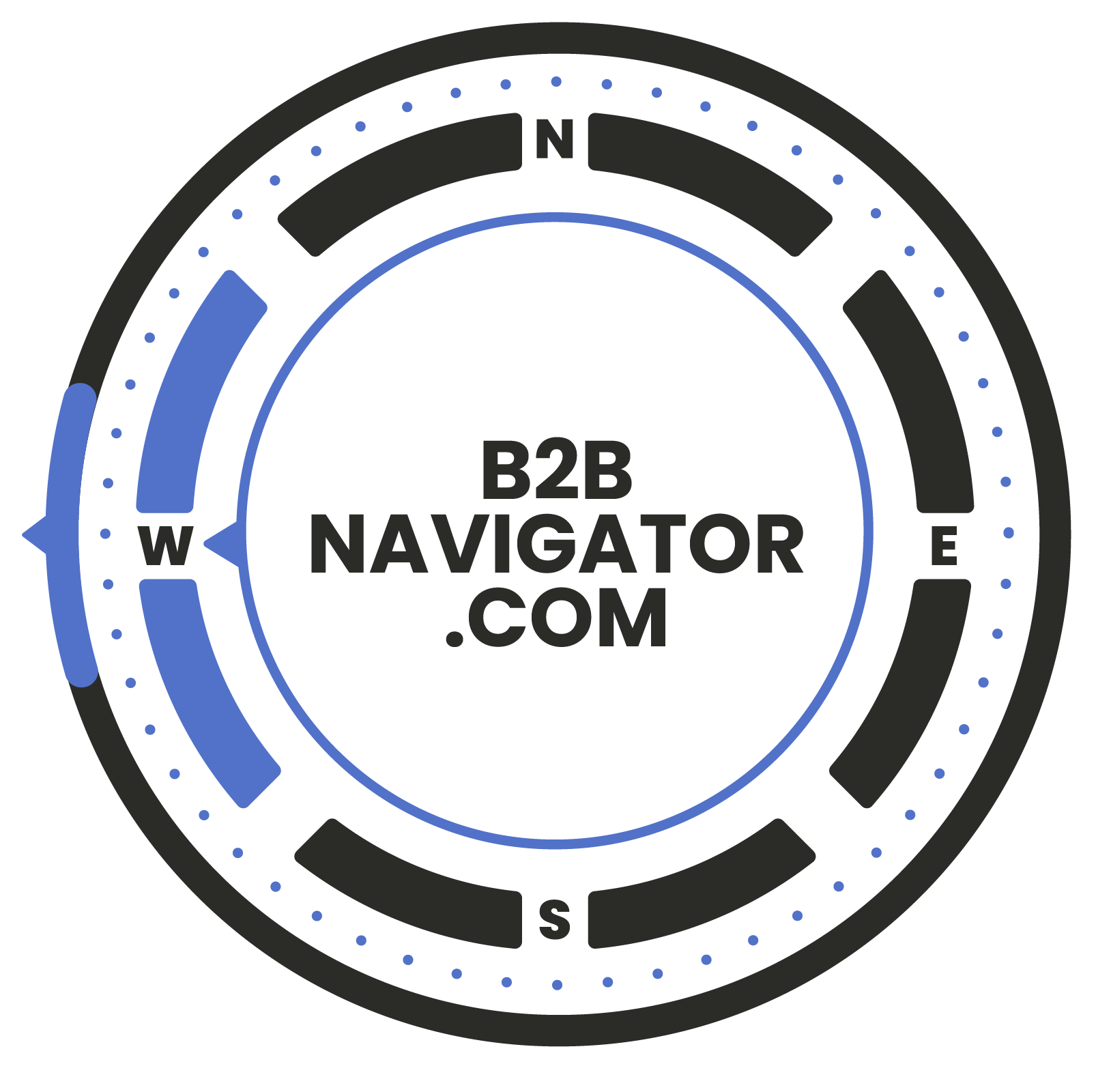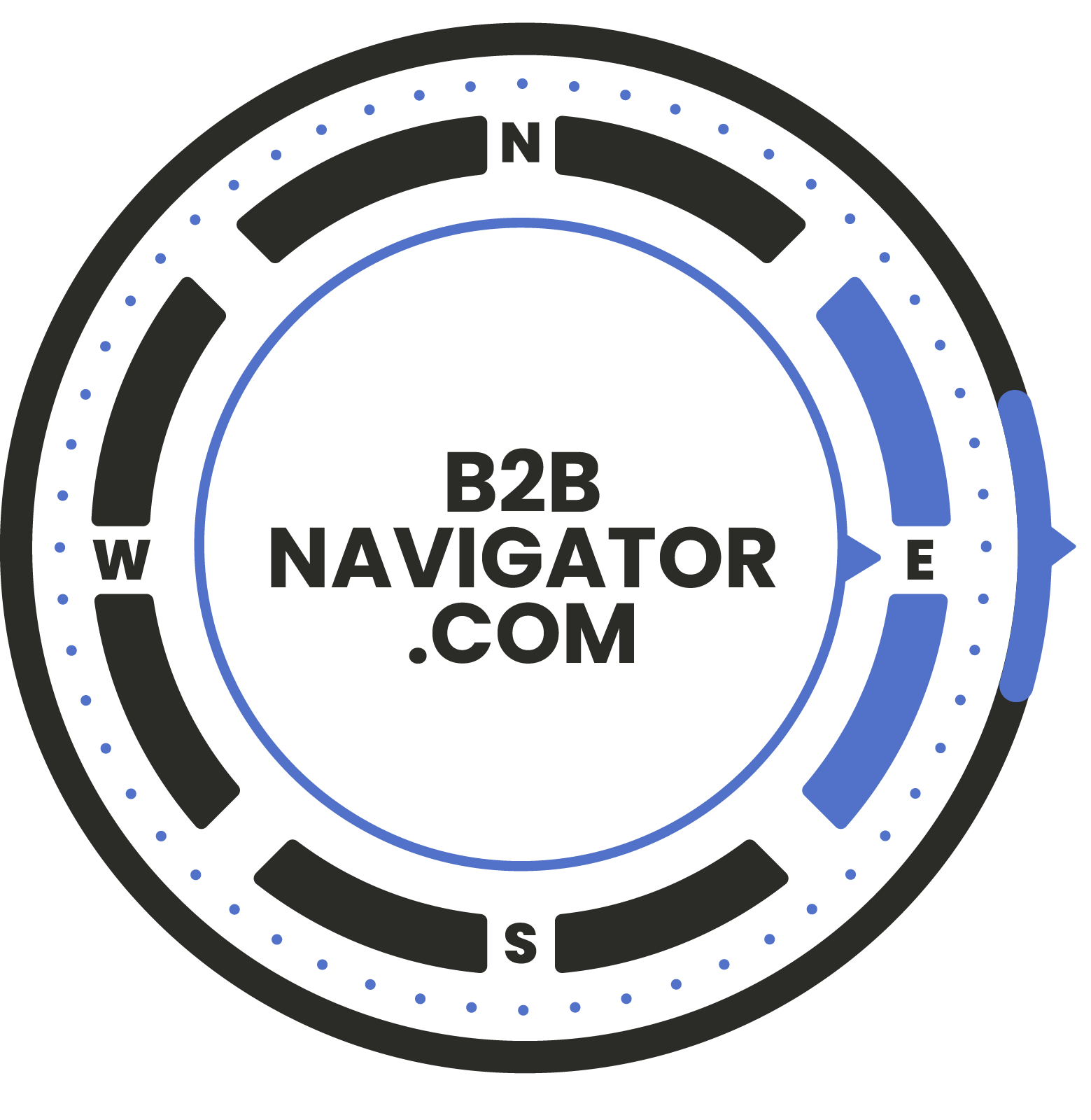B2B Navigator offers a rapid, repeatable and collaborative
approach to building value for B2B tech firms
Engage Your Audience
Determine Where to Play and How to Win




Align the Revenue Team
Maximise the Perceived Value of Your Offering
Determine Where to Play and How to Win
Decisions, Decisions…
Every effective go to market effort is based on a set of good decisions. The converse is also true. Making those decisions lives in the realm of strategy, and unfortunately strategy is usually complicated, a chore and only occasionally effective. We share this perspective, which was the genesis for “Playing to Win: How Strategy Really Works (2013)” by Roger Martin
In most go to market efforts, the complexity arrives via the tasks of segmentation, targeting, and positioning. These are related but separate disciplines with a large number of possible approaches. Because of this, there is seldom a common thread or even any connecting logic between them, and their implementation tends to get spread across the revenue team. The result is often laborious and only occasionally successful. Surely there has to be a better way?
Why Where to Play and How to Win Works
By way of contrast, we’ve found that Martin’s system, augmented with a set of proven go to market tools, overcomes these limitations.
- It is a relatively simple system with connecting logic between stages
- The approach (and language used) makes it suitable for use across the revenue team
- It requires a set of tests—which we have designed for the B2B tech market— to gauge both the success conditions required and any potential barriers
- Though developed for B2C, it has been proven by many B2B organisations
The B2B Navigator Implementation
We have developed a workflow based on the strategy cascade of ‘Playing to Win’ that guides you through the process of making the decisions you need to make to go to market. This starts with your strategic direction, which can be constructed, validated or just reviewed.
Using that direction we explore the possibilities it presents and then turn those possibilities into validated options using a series of tests. Finally, we develop a compelling point of view story that enables the Sales, Marketing and Product teams to take your offering to market with confidence.
The work is conducted as a series of workshops using a digital whiteboard for collaboration and supported by a playbook to enable you to continue your journey independently.
B2B Navigator Guided Workspace
Direction
- Start Point
- Aspirational
- Guiding
Possibilities
- Plentiful
- Potential
- Outlined
Options
- Fewer, clearer
- Value defined
- Evaluated
Readiness
- Where to Play
- How to Win
- Point of View Story
Maximise the Perceived Value of Your Offering
Value Matters Most
Your ability to articulate your value to your target audience is fundamental to your ability to build pipeline, the price you can sell at, your win rate, and just about every other metric that matters to the revenue team. And yet very few organisations have an agreed, methodical and repeatable approach to building value. We set out to change that with B2B Navigator.
Let’s Start with a Value Proposition
Few terms are used more inconsistently than value proposition. This is unfortunate as tight, well constructed value propositions are critical in the construction of a successful go to market effort. A solid value proposition consists of an audience, a need, an outcome and a distinction – a definition that came from SiriusDecisions (now Forrester).
A Modular Approach to Value
This is a great start. However, in B2B markets an essential part of building value is to be able to describe the capabilities that deliver customer outcomes. In B2B tech markets we also need to take account of the product category as part of the competitive landscape. Accordingly we have developed a simple, modular approach we refer to as the value network.
The graphic illustrates the principles at work. We seek to understand how your value is generated, answering questions such as:
- How do the outcomes you deliver meet the needs of your customer?
- How do your capabilities deliver those outcomes?
- What is unique about your capabilities relative to the competition and in your product category?
We use this model as part of a simple, modular approach to unlocking your value, and to help determine where you play and how you will win.
The value you can convey is based on what you can identify,
differentiate and prove for a given audience.
Align the Revenue Team
Why Alignment is Important
Many of the forces that shape the market and influence growth, including the competition and the economy, are outside of our control, but one of the most powerful factors of all is something that we can harness – if we have the will to do so.
This is the alignment of the revenue team – across Sales, Marketing and Product teams. Growth can and does occur in organisations where these teams are not well aligned, but it is harder – and unnecessarily so. Research on this topic is relatively scarce, but a study by SiriusDecisions in 2018 showed revenue growth in well aligned organisations was 18% faster than those with poor alignment.
Most of us have experience of the costly nature of poor alignment across or within these teams, particularly between Sales and Marketing, the question is – what can be done to improve it?
Revenue Team Alignment with B2B Navigator
At the heart of the challenge of alignment are different viewpoints and a lack of a common understanding. Our approach is to develop a common buyer-centric viewpoint across the revenue team. This approach works on the basis that it will make Sales, Marketing and Product teams more effective both separately and in collaboration by pursuing and achieving a shared challenge. Our approach rests on four key pillars.
- Agreeing clear, simple and usable definitions – Important go to market artefacts like use cases and value propositions and vital processes like targeting are all defined and agreed. We also show how these can be created in a repeatable fashion.
- Developing a shared approach to value – Elements such needs, outcomes and capabilities are some of the key building blocks of value. Gaining an understanding of these and their relationships enables a common, fact-based, rational and collaborative approach.
- Adopting common practices and tools – Important tasks such as developing a value proposition, defining a use case or developing a competitive analysis, quickly and in a repeatable fashion becomes much simpler and easier once the tasks are broken down.
- Learning via doing – The team learn together in a practical fashion by tackling worthwhile challenges. We avoid theory in favour of a practical approach with the goal of subsequent adoption.
Who Should Attend?
We typically conduct this work with a small group of representatives from Sales, Product and Marketing teams who become the catalysts for change in the wider organisation.
Engage Your Audience
Stories Matter
Stories are an intrinsic part of the human experience and how we engage with one another, but many B2B tech businesses rely too heavily on their product and neglect to develop a powerful enough narrative to be engaging. In some cases, the value of storytelling plays a recognised role but it is limited to the brand story. We believe that every value proposition you take to market deserves to be told as a compelling story.
Every Value Proposition Deserves a Story to Bring it to life
Even a well-constructed value proposition is not a story – it is different to a story in both purpose and construction. In the work we do, the creation and testing of a story is the final part of the B2B Navigator workflow and creates the call to action that is so vital for B2B messaging.
The Core of the B2B Story: Structure
The most important element of the B2B storytelling is the structure. The five point story structure commonly is use has DNA directly traceable to the ancient principles of rhetoric.
SCR
We generally use SCR (Situation, Complication, Resolution) to structure the B2B stories we create. SCR clearly explains the rationale behind a recommendation, and so offers both a call to action and an argument to support it, which is why it is commonly used by consulting companies like McKinsey to support transformative recommendations.
Built on your Value Propositions
Story development is often a standalone exercise, but in B2B Navigator it is part of a workflow that includes the development of a strong value proposition. One flows into the other, making the process easier to repeat.
SCR Story Structure
Situation
Frame the important, recent context the audience already knows and accepts
Complication
Provide the reason the situation requires action now
Resolution
Describe the requirements to resolve a set of problems (or capture an opportunity).
B2B Navigator – the guided workspace for B2B tech GTMs
B2B Navigator offers a rapid, repeatable and collaborative approach to building value that alleviates many of the foundational challenges B2B tech firms face.
It provides a collaborative workspace that combines proven techniques from industry leaders in their field to create a modular and more effective platform for B2B go to market efforts.
The result is a force multiplier effect across the revenue team that maximizes the perceived value of your offering to your target audience.
B2B Navigator is delivered through online workshops using video and digital whiteboards (Miro), supported by a customizable workflow and playbook.
B2B Navigator:
- Creates a shared collaborative workspace for the revenue team supported by proven strategic logic.
- Reduces complexity and accelerates the work by using well-defined modular building blocks to build value that can be combined as needed
- Combines the elements of positioning (company, customer, competition) with the components of value propositions to maximise the perceived value of your offering for a given audience
- Enable Sales, Marketing and Product teams to step away from their individual perspectives, combine their insights and collaborate more effectively